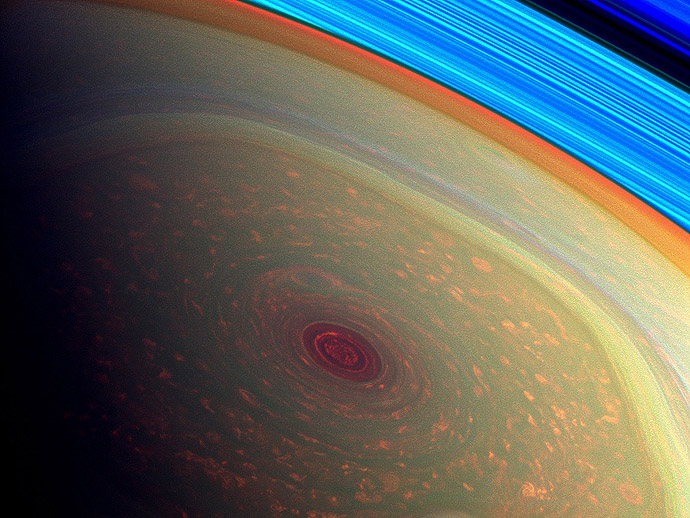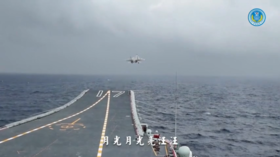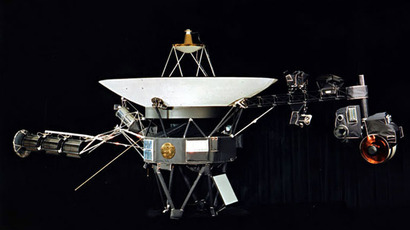Monster hurricane on Saturn captured by NASA’s Cassini spacecraft
NASA released spectacular new images of a hurricane swirling at Saturn’s north pole captured by Cassini spacecraft. The storm 20 times the size of Hurricane Sandy has puzzled scientists, and may give an insight into how terrestrial hurricanes are formed.
Cassini had to wait for almost 7 years to take a closer view of the mysterious swirling pattern on the north pole of the gas giant in favorable light conditions. Known as the hexagon, the weather pattern fits two Earths in diameter, and has been found to be housing a vortex strikingly similar to a terrestrial hurricane, NASA reports.
Saturn hurricane’s eye, is however, 2,000 kilometers wide, spins four times faster than hurricane-force winds on Earth, and, as scientists believe, has been “stuck” at the planet’s pole for years.
But ultimately, there’re no oceans of water on Saturn to feed the enormous storm, which has set off scientists thinking of some alternative theory how hurricanes are formed and sustained.
“We did a double take when we saw this vortex because it looks so much like a hurricane on Earth,” said Andrew Ingersoll, a Cassini imaging team member at the California Institute of Technology, US.
“But there it is at Saturn, on a much larger scale, and it is somehow getting by on the small amounts of water vapor in Saturn’s hydrogen atmosphere,” Ingersoll said, adding that scientists will be studying the formation to gain insight into terrestrial hurricanes.

The visible-light views of the Saturnian storm have been taken by Cassini from a height of 420,000 kilometers. The images have then been false-colored by NASA to show detail, with red indicating clouds at lower altitudes, and green representing higher altitude formations.
These’re first sunlit images of the planet’s northern pole since
1981 shots taken during the fly-by of Voyager 2. In order to
capture the view, scientists had to change Cassini’s orbital
inclination, which is being done only once every few years since
the spacecraft arrived at Saturn in 2004.
















